Son Doong Cave
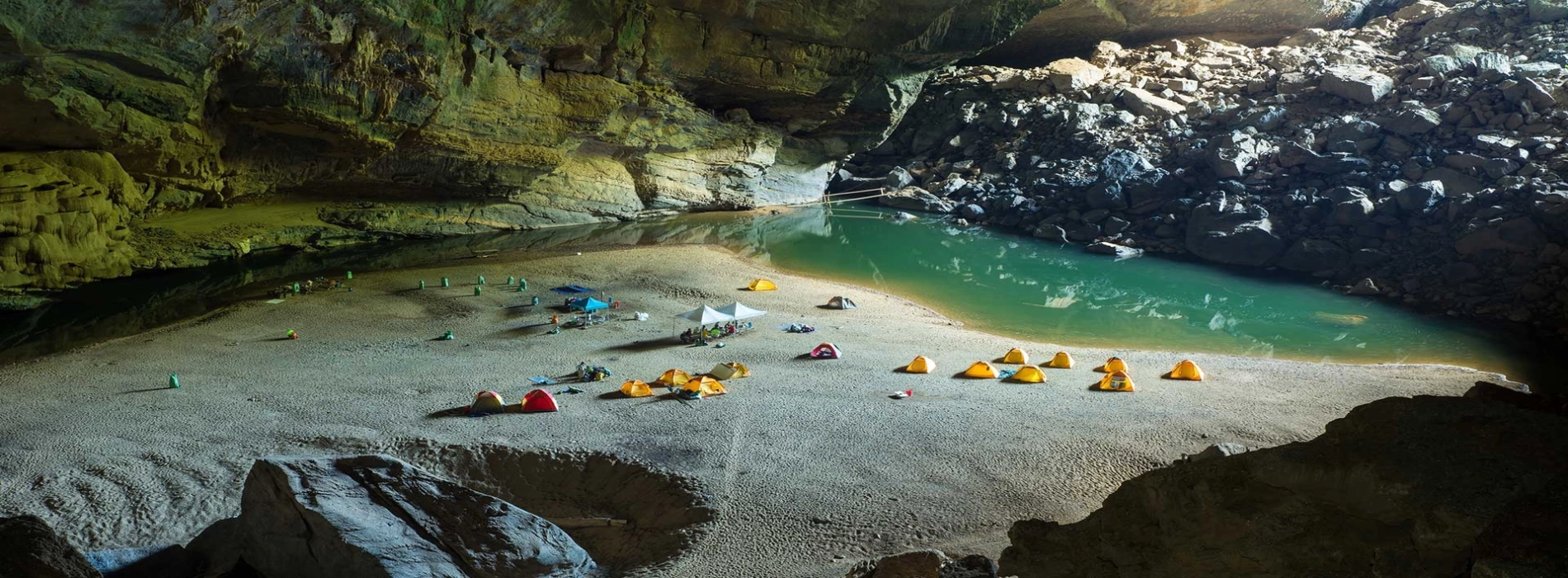
Beyond Phong Nha-Ke Bang, nature has gifted Quang Binh Province with another masterpiece deep within the jungle. This is none other than Son Doong Cave - the largest natural cave discovered by humans to date. The cave reaches 200 meters and extends approximately 9 kilometers. Its estimated volume is equivalent to 15,000 Olympic-sized swimming pools.

People become small in the vastness of Son Doong Cave. Photo: Dan tri
Discovered in 2009, Son Doong Cave has quickly gained worldwide recognition for its stunning beauty. Not only is it a cave, but it also contains a rich geological and natural system isolated from the outside world. Asia King Travel will provide useful information about Son Doong Cave through this article.
Ho Khanh was a local living in Phong Nha. On a jungle trip in 1990, he encountered a sudden storm and had to find shelter from the rain. He found a small cave entrance hidden behind a rocky cliff. As he approached, Ho Khanh saw thick fog billowing out of the cave and could hear the sound of a flowing stream. However, he returned home without further exploration.
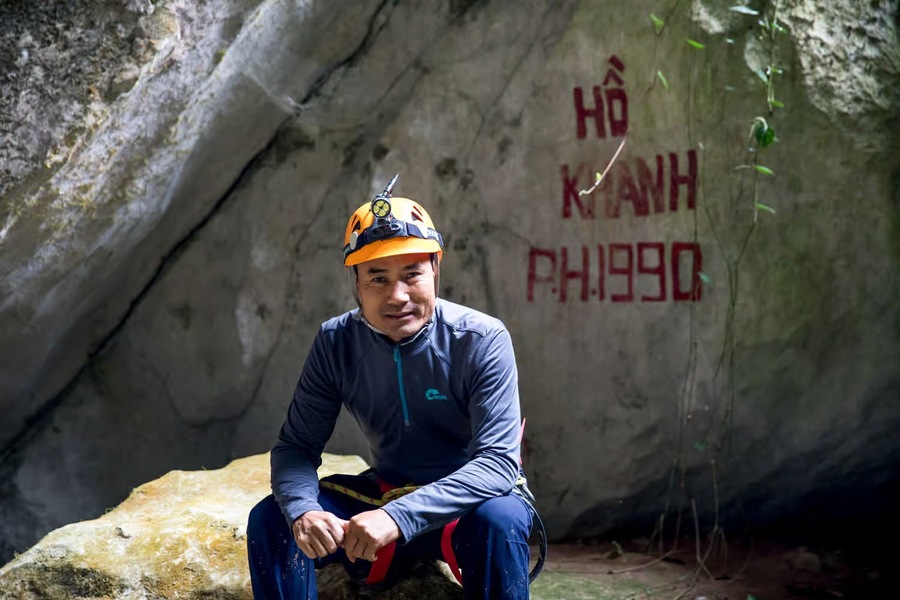
When exploring the cave in 1990, Ho Khanh remembered that the wind blew strongly out of the cave, so it could be a large cave. Photo: Oxalis Adventure
In 2007, two British caving expedition members came to Phong Nha to search for a large cave based on their research. They met Ho Khanh, who mentioned the cave where he had taken shelter from the rain years ago. Both were excited and asked him to search for the cave again. Ho Khanh finally rediscovered it after a year of identifying among the mountains.
April 7th, 2009 marked the official discovery of the cave. It was suggested to name Ho Khanh. But he discussed with the expedition team and decided to name it Son Doong (a combination of “Son” meaning “mountain” and “Doong” the name of the valley where the Rao Thuong stream flows). Using measuring equipment, the team determined that this is the largest natural cave in the world.

An explorer is observing strange cone-shaped rocks. Photo: Oxalis Adventure
With the power of media, Vietnam and cave explorers have introduced Son Doong Cave to the world. The subsequent announcements about the cave's size and unique ecosystem have left everyone astonished. To date, explorers have yet to conquer the cave fully.
Son Doong Cave is a part of Phong Nha-Ke Bang National Park in Bo Trach District, Quang Binh Province. The cave is about 3 kilometers west of Phong Nha Cave, near the border between Vietnam and Laos. And 40 kilometers from the nearest city Dong Hoi.
Suggested for you: Center Vietnam Tour 7 days
Currently, only geologists are permitted to explore Son Doong Cave. Tourist access is strictly prohibited. Oxalis Adventure is the sole operator offering guided tours for only 1,000 tourists annually. If you're fortunate enough to secure a spot, you'll embark on a once-in-a-lifetime journey with the most experienced guide team.
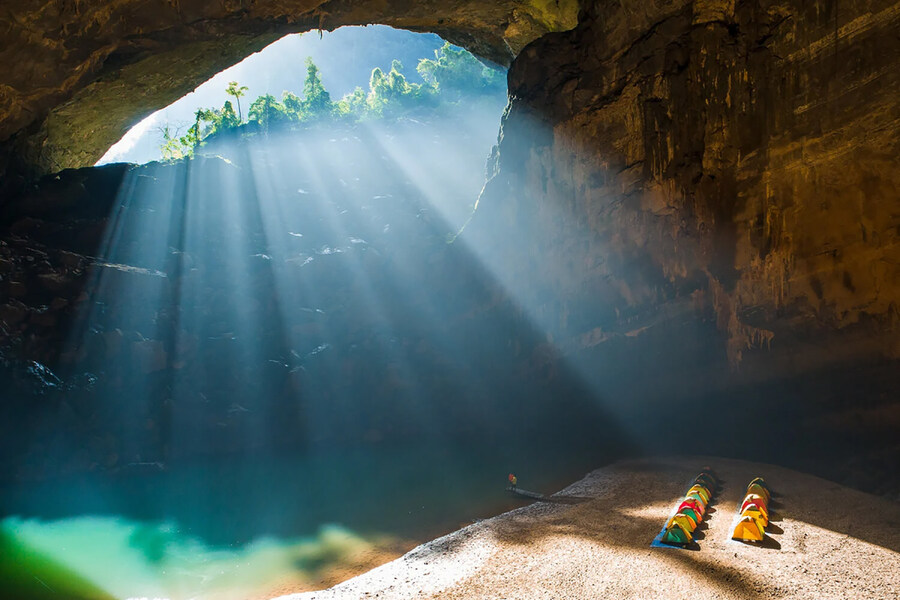
Camping in a cave is probably an experience you rarely get to try. Photo: Vietnam.vn
Cave tours are conducted from January to August. Son Doong Cave is closed for the rest of the year to all tourism and exploration activities to guarantee ecosystem restoration. Also, the rainy season in Quang Binh usually occurs around this time. Heavy rains can cause floods rising tens of meters.
On the first exploration, the expedition team was completely blocked by a massive stalagmite wall. Forced to turn back, they named the obstruction “The Great Wall of Vietnam” in recognition of its imposing stature. The mystery of what lay beyond remained unsolved.

The Great Wall of Vietnam blocked all the way to the gate out. Photo: Oxalis Adventure
The explorers finally measured the wall to be 90 meters high. They had to traverse a muddy terrain to reach The Great Wall of Vietnam. The ascent required specialized equipment and detailed guidance from experts. Upon conquering the wall, they found a way out of the cave.
Cave pearls are calcium carbonate concretions formed by dripping water from stalagmite. Typically, these "pearls" are only about 1 centimeter in diameter, but in Son Doong Cave, they can grow as large as baseballs.

They look like they're from the other world. Photo: Oxalis Adventure
On days when rainwater seeps into the cave, the pearls become more lustrous under the glow of flashlights. However, these cave pearls are simply calcium carbonate formations, they will discoloration and deterioration when exposed to direct sunlight. Consequently, bringing the pearls from the cave is banned.
The iconic image of a giant cave mouth bathed in sunlight that you often see online is from Doline 2. This doline is approximately 3 kilometers from the entrance. When sunlight shines through the cracks, it illuminates the vast cave, creating a breathtaking spectacle. Many visitors have stood for hours marveling at this natural wonder.
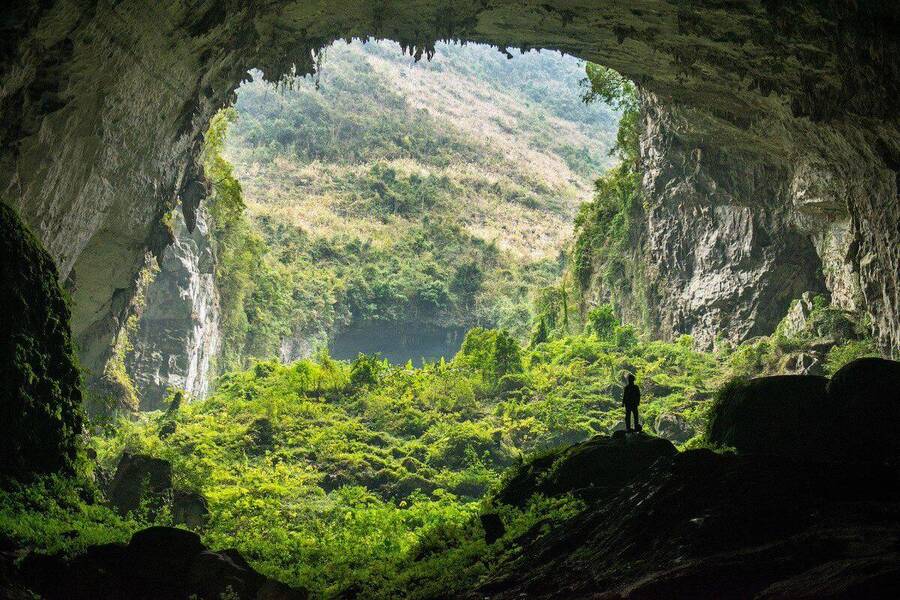
Doline 2 has another name called Garden of Edam since a primival forest inside. Photo: Dealtoday
The underground river flowing through the cave originates from the Rao Thuong stream. If you just forgot, this is the very stream that gives Son Doong Cave its name. The underground river has made the environment and ecosystem inside the cave even more unique.
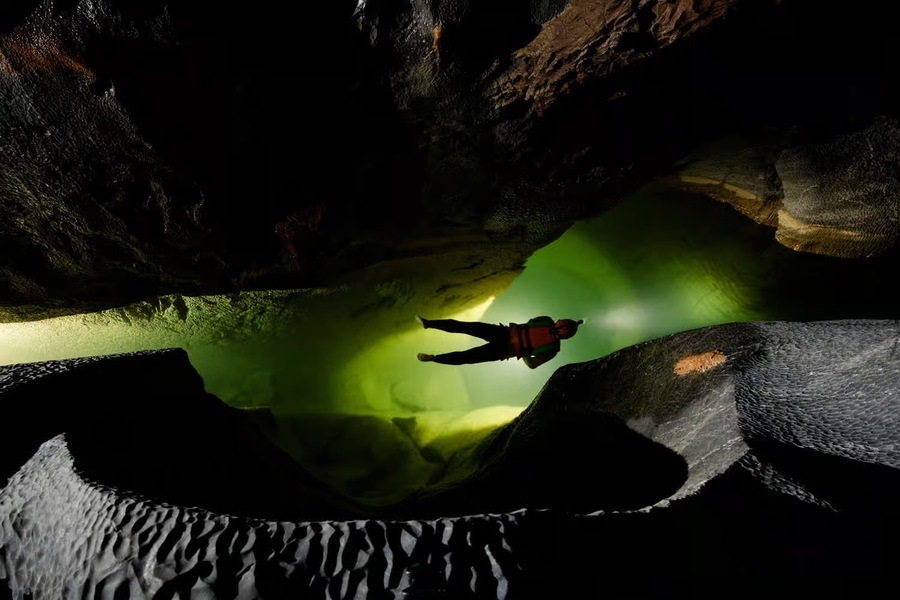
You will be able to swim and kayak in the underground river during your cave tour. Photo: Oxalis Adventure
The underground river flows until it reaches Doline 1, where it plunges down a 40-meter waterfall before disappearing into the cave. Explorers speculate that the underground river of Son Doong Cave is connected to Thung Cave, located 600 meters away. The passage that may connect the two caves is a daunting 90 meters deep, unexplored at present.
Son Doong Cave is a natural masterpiece that Vietnam proudly calls its own. If you ever have the chance to visit, you will undoubtedly be overwhelmed by its unparalleled beauty. And it's just one part of the Phong Nha-Ke Bang. Then quickly contact Asia King Travel for a memorable lifetime cave adventure.
Suggested for you: Center Vietnam 10 days: Hidden Gem of Central Part